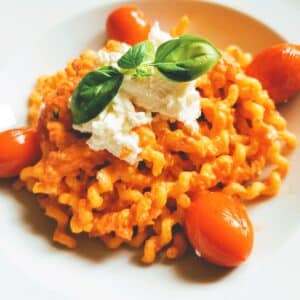Get ready to spice up your pesto life with this delicious pesto Calabrese from Calabria. This sauce has a creamy red pepper base that can be used in many ways. Try enjoying it hot or cold with your pasta, use it as a dip, or spread it on bruschetta.
History
In Italian, the word pesto derives from the verb ‘pestare’ meaning to pound or crush. The original recipe for pesto comes from Liguria, home to pesto Genovese or basil pesto. That pesto is traditionally made using a pestle and mortar. So the word pesto and the English ‘pestle’ derive from the same source! Nowadays, many Italians prefer to use a food blender or processor to make pesto.
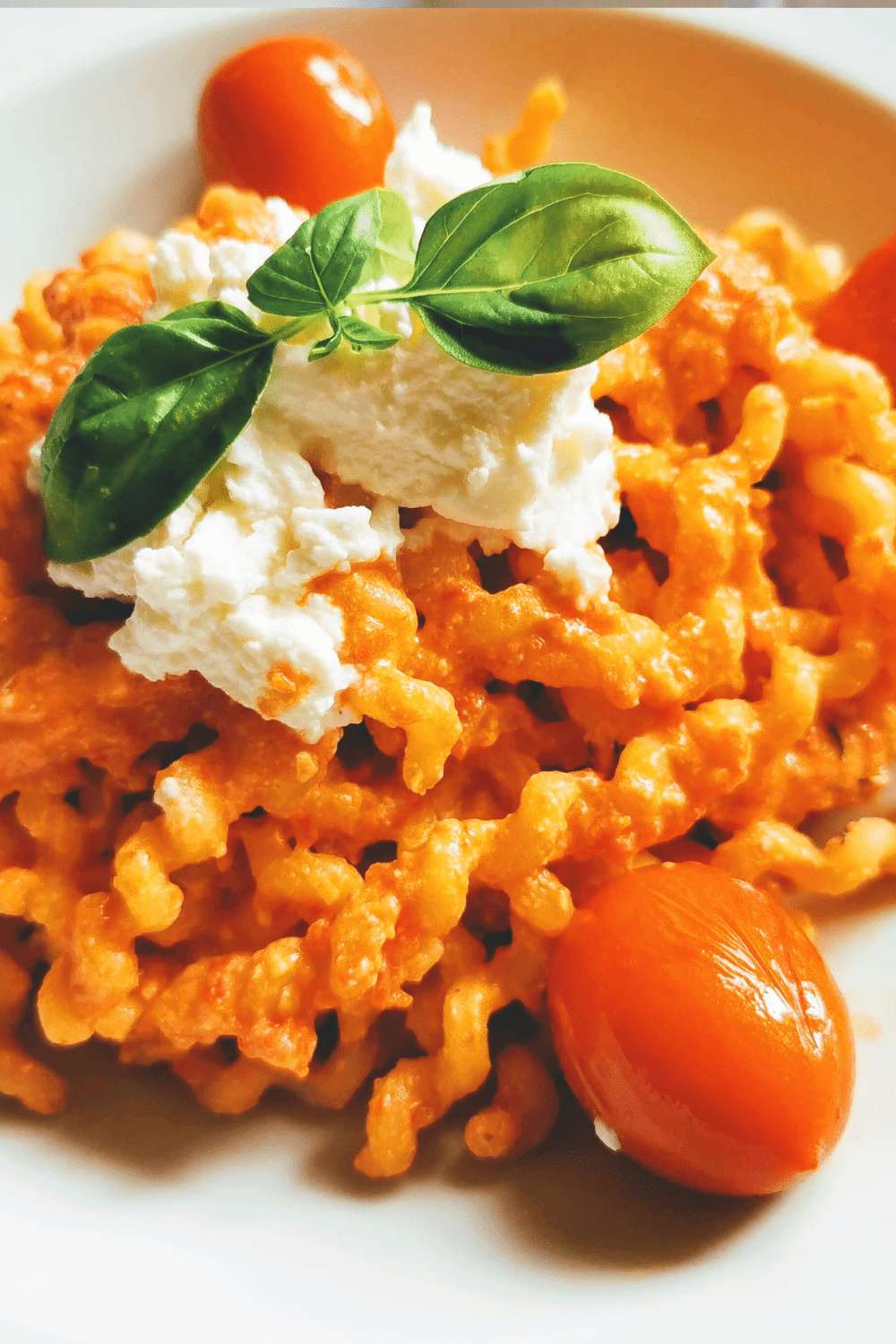
This is not actually an old traditional Calabrian recipe but includes typical ingredients from Calabria and has become very popular here in Italy. So much so, that Barilla and other companies make and sell it as a ready sauce. Although Barilla’s version doesn’t include ricotta.
Other versions of pesto calabrese
Pesto Calabrese is known as a red pesto or red pepper pesto. However, although I haven’t tried it, this can be made in a green version too. Just use green capsicums, green tomatoes and green peperoncino. You can also prepare a good quantity of this sauce and freeze it in small portions so you have it ready for other meals.
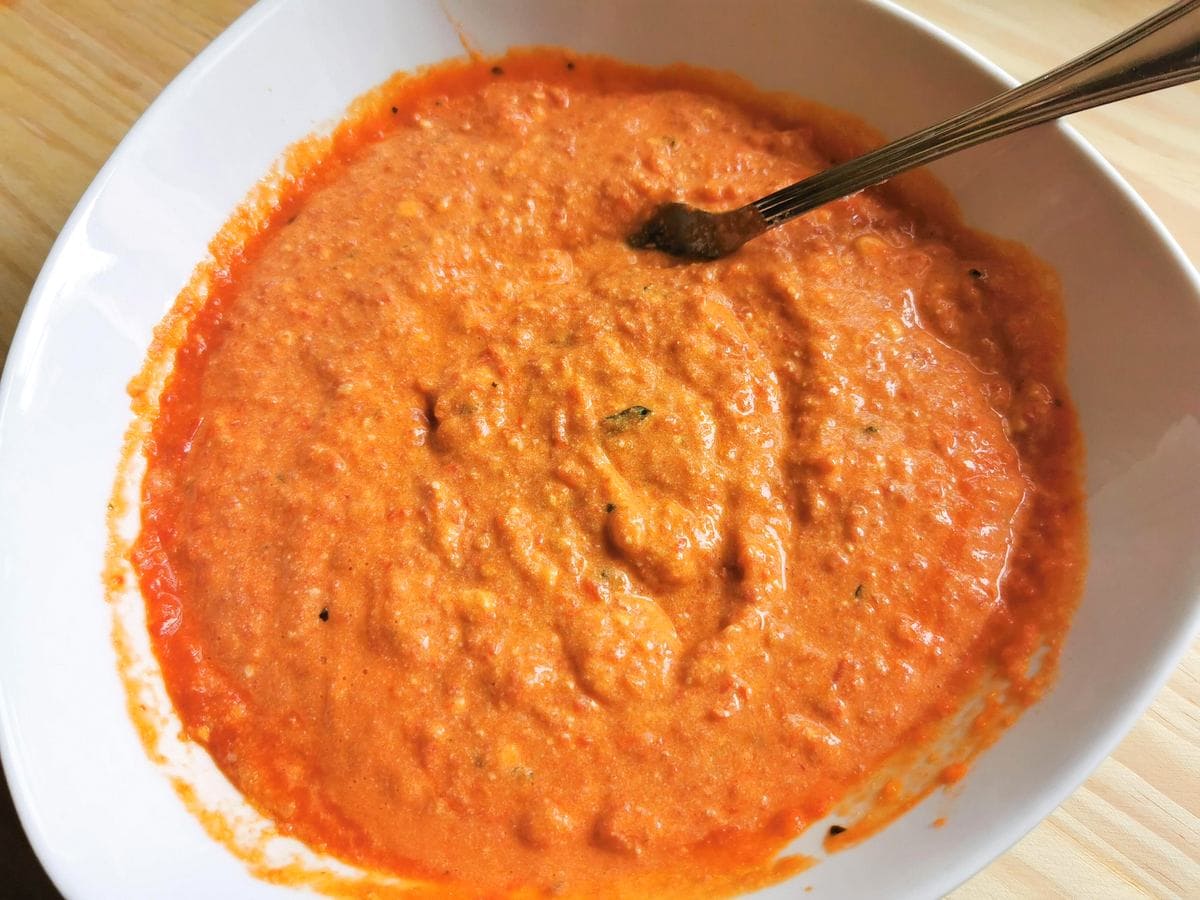
Ingredients
Pasta: I used long fusilli pasta because its spirals make it excellent at holding sauces. You can substitute other pasta shapes, such as penne, rigatoni, spaghetti, or farfalle, depending on what you have on hand or prefer.
Fresh Ricotta: Adds creaminess to the pesto. Use sheep’s milk ricotta for a richer flavor or cow’s milk ricotta for a lighter taste.
Pecorino Cheese: This sharp, salty cheese enhances the depth of the pesto. If Pecorino is unavailable, a good Parmesan like Parmigiano Reggiano or Grana Padano is a good substitute. If you are vegetarian, make sure to use vegetarian parmesan, as traditional Parmigiano and Grana contain animal rennet.
Vine Tomatoes: Fresh tomatoes add a slight tang and sweetness. Datterini tomatoes are a great alternative to vine tomatoes.
Red Bell Pepper: Provides a sweet, vibrant base for the pesto. You can use one large or two small peppers.
Tropea Onion: Has a mild and sweet flavor that complements the sweet notes of the red bell pepper. If Tropea onions are not available, any red onion can be used as a substitute.
Peperoncino Flakes: These chili flakes add a subtle heat to the pesto. Adjust the amount based on how spicy you like your food.
Oregano: This herb introduces a classic Mediterranean flavor to the dish. Use fresh for a brighter flavor or dried for an earthier flavor.
Fresh Basil: Basil leaves add a lovely, herbal note that lifts the flavors of the pesto.
Extra Virgin Olive Oil: Use a good quality extra virgin oil as it will add more flavor to the vegetables while they cook.
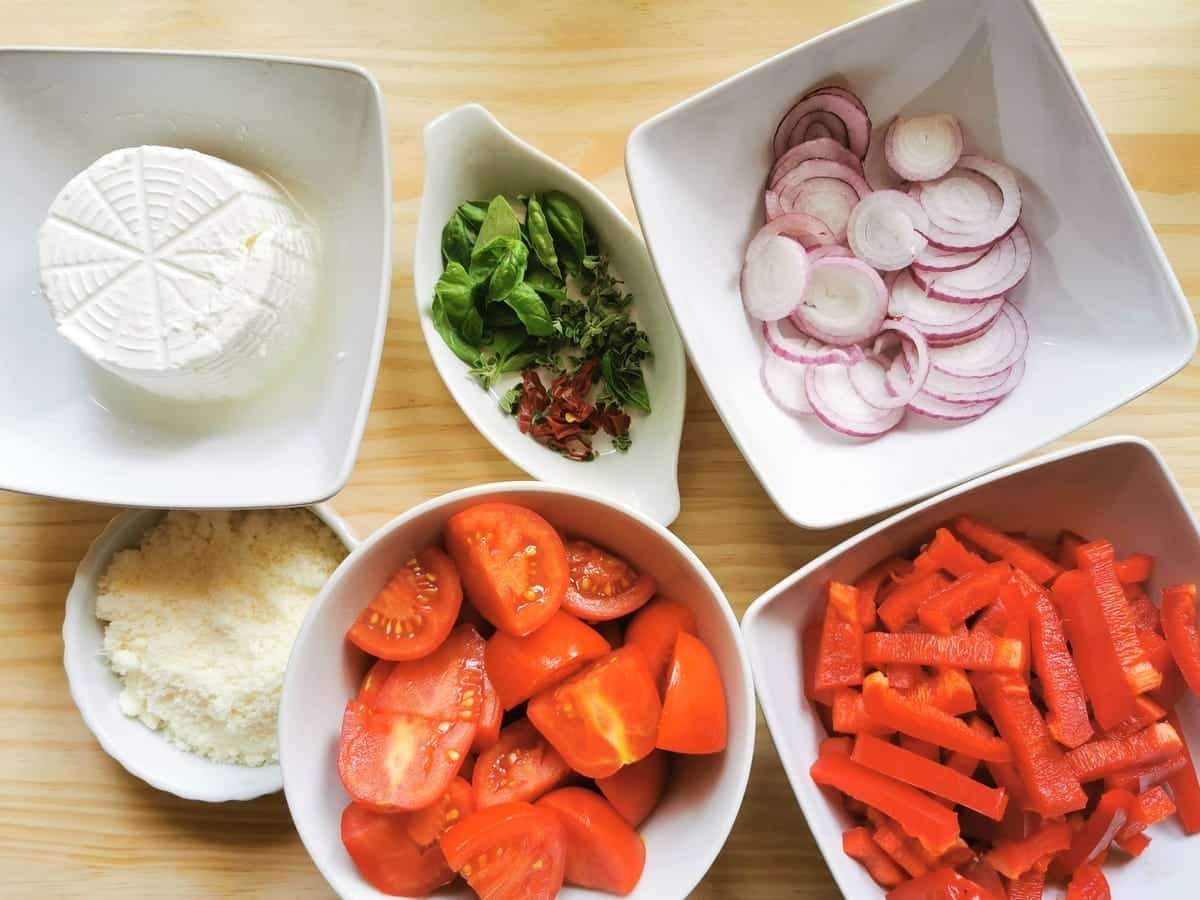
Expert Tips
Gentle Cooking: When cooking the onions, red bell peppers, and tomatoes for the pesto, maintain a medium heat to avoid browning the vegetables. High heat can cause browning, which might introduce a bitter flavor and diminish some of the vibrant, fresh flavors of the red pesto.
Blending the Pesto: For those who prefer a smooth pesto, blend the vegetables and herbs until thoroughly combined. If you’re aiming for a rustic texture with more body, pulse the blender a few times, check the consistency, and then pulse again as needed. Continuously check to ensure you achieve your desired texture without overprocessing.
Reserving Pasta Water: Always reserve a cup of pasta cooking water before draining. This starchy water is invaluable for adjusting the consistency of your pesto sauce, ensuring it clings beautifully to the pasta without becoming too thick.
Step by Step Instructions
1) In a large frying pan or skillet, heat the olive oil over medium heat. Add the chopped onion and sauté until slightly soft. Add the chopped red bell pepper and continue cooking until it starts to soften.
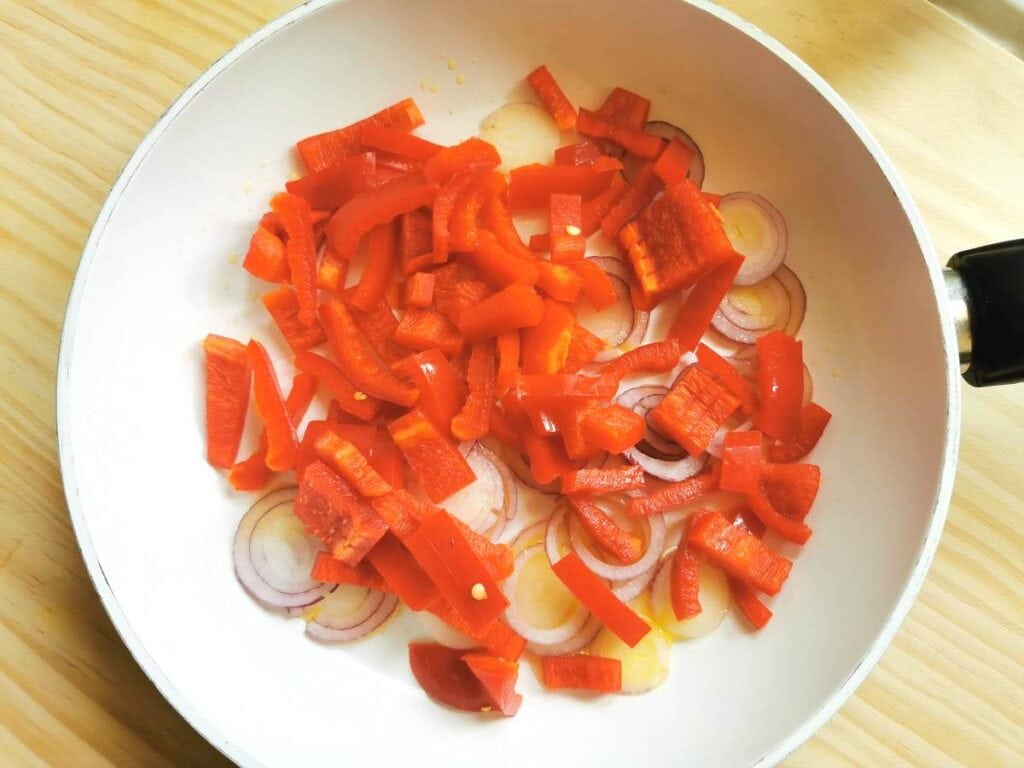
2) Add the tomatoes and peperoncino and cook for about 15 minutes, until the tomatoes have softened. Season with salt, black pepper, basil, and oregano, and cook for an additional 1 to 2 minutes.
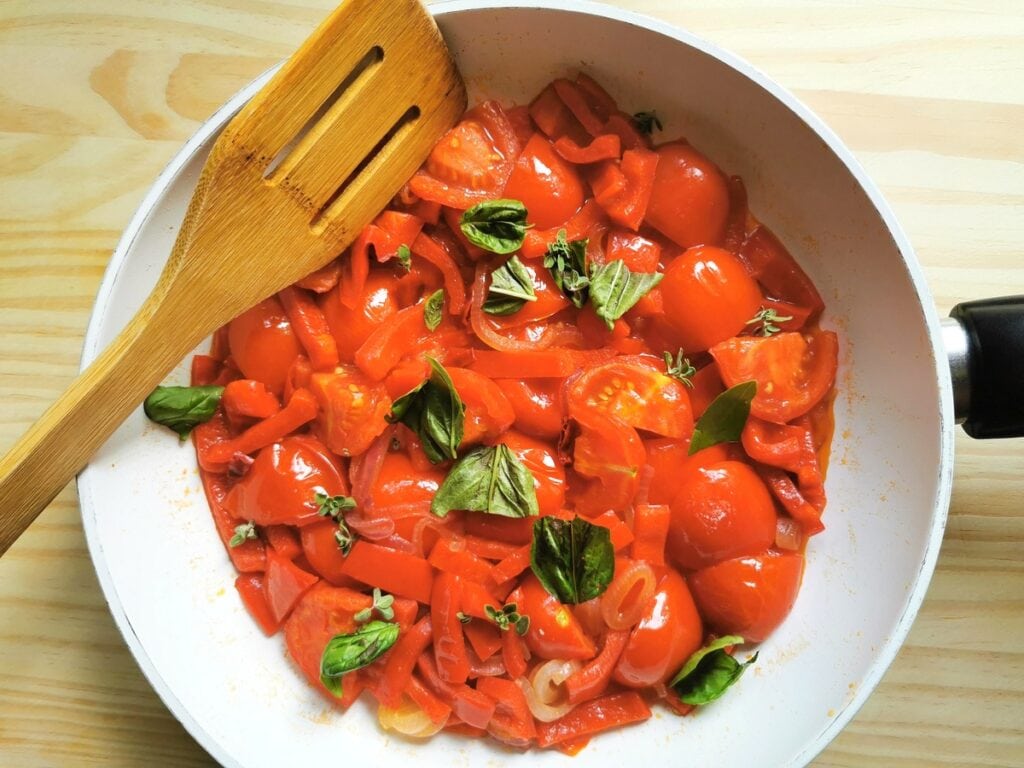
3) Remove from heat and allow the vegetables to cool slightly. Transfer to a blender or food processor, add the cooking juices, and blend to a smooth, creamy consistency.
Note: If you prefer a rustic texture, pulse the blender instead until you have a creamy sauce with some small chunks.
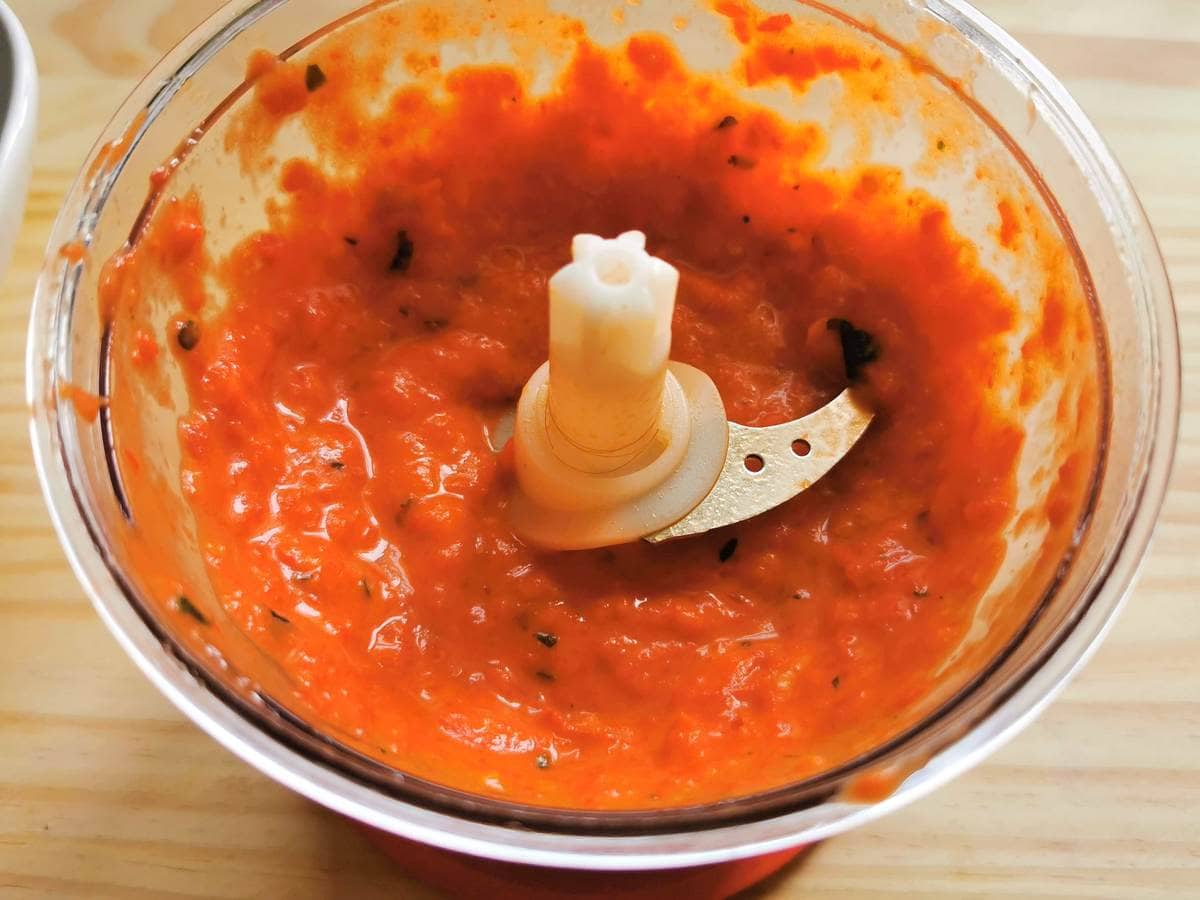
4) Transfer the blended vegetable mixture to a bowl. Stir in 200g of ricotta and the grated pecorino until well combined. Set aside. Your pesto Calabrese is ready to eat.
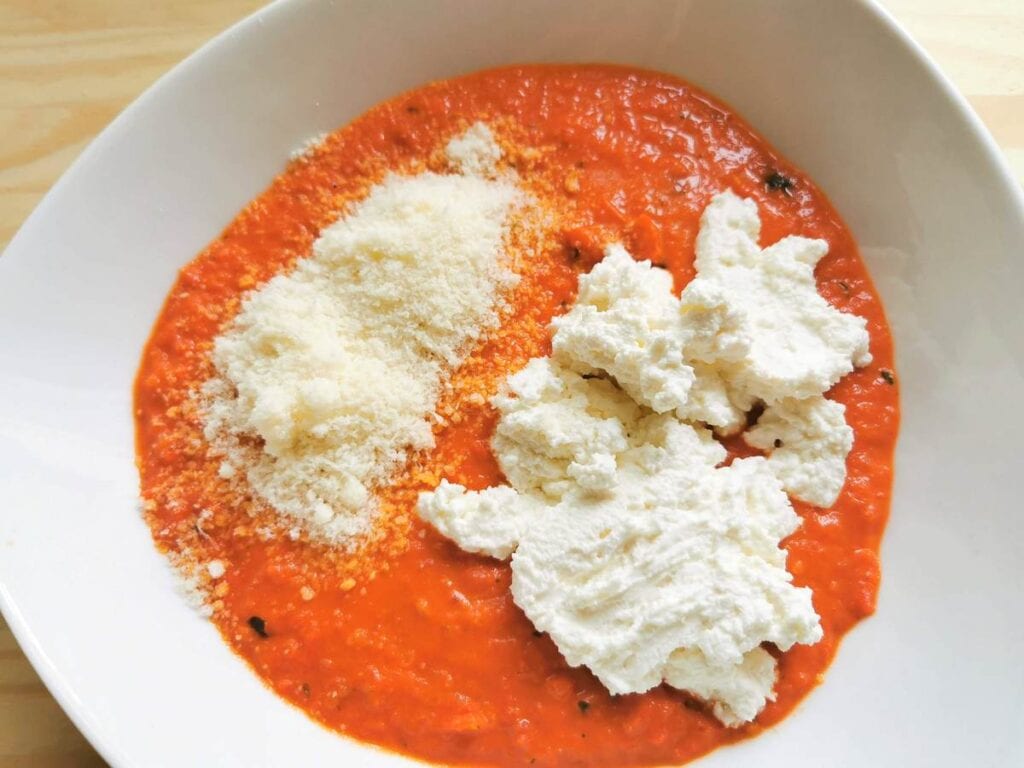
How to serve your pesto calabrese with pasta
1) Bring a large pot of water to a boil. Add salt and return to a boil, then add the pasta and cook according to the package instructions until al dente. Reserve a cup of pasta cooking water before draining.
2) In a large pan over medium-low heat, mix the drained pasta with the pesto Calabrese. Stir together until hot throughout. If the sauce is too thick, adjust the consistency by adding some of the reserved pasta cooking water.
3) Serve the pasta immediately, topped with extra ricotta, basil, and optionally roasted tomatoes and a sprinkle of red chili flakes.
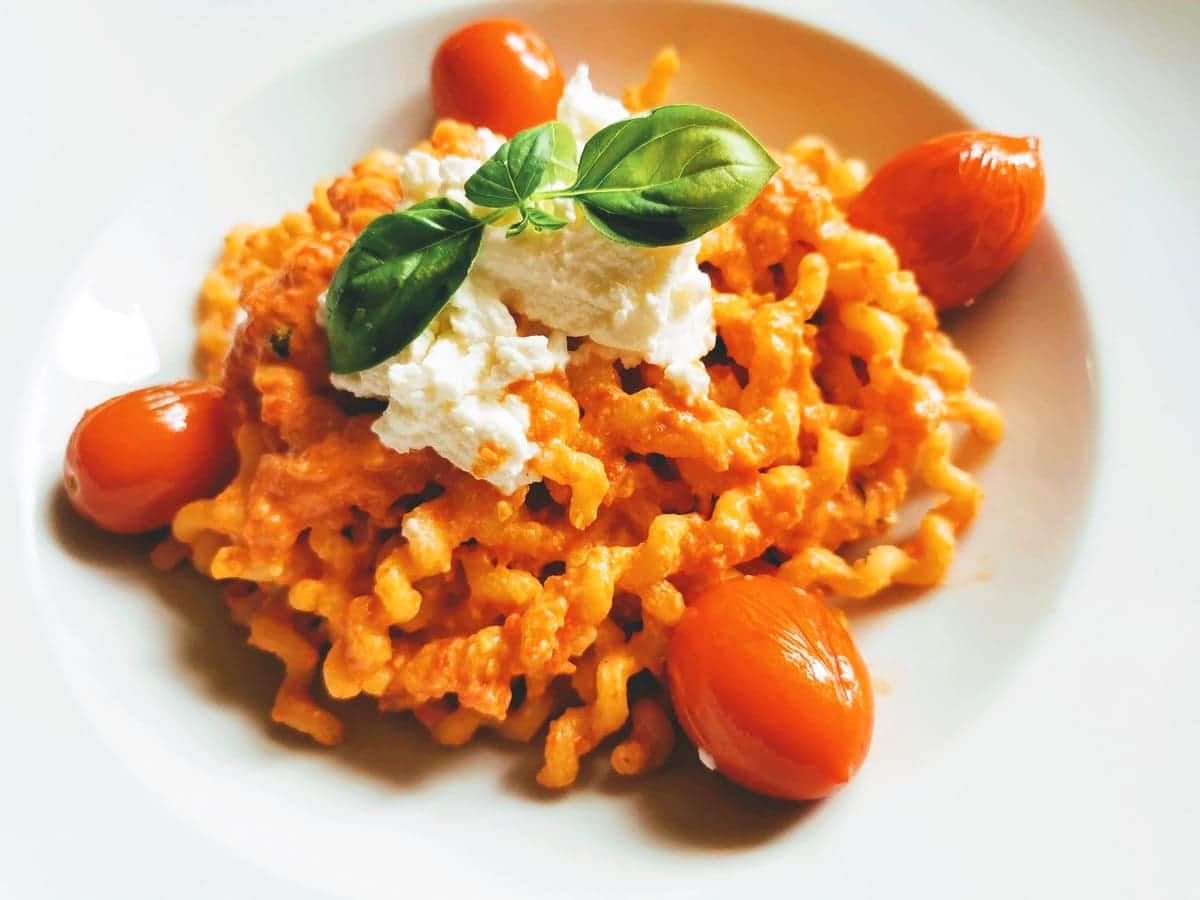
Storage and Leftovers
Pesto Calabrese should be stored in an airtight container in the refrigerator. It will maintain its freshness and flavor for 4-5 days.
If you’ve mixed the pasta with the pesto, store it in an airtight container in the refrigerator. It will last for up to 3 days.
To reheat, place the pasta in a microwave-safe container and cover it. Heat on medium power for 2 minutes, then stir. Continue heating in 30-60 second intervals, stirring in between, until the pasta is hot throughout.
The pesto and pasta can also be enjoyed cold from the refrigerator, which makes for a refreshing meal, especially in warmer weather.
FAQs
You can freeze pesto calabrese; however, it’s best enjoyed fresh. If you do choose to freeze it, note that the texture may change slightly upon thawing. Use it within 6 months, and thaw in the refrigerator before using.
This pesto is also fabulous as a dip or on bruschetta or even with meat or cheese. So, if you make enough you can try serving it in different ways to see which you like best. Whichever way you serve it, I’m sure it will become a firm favorite!
Pesto Calabrese has a mild to moderate heat level that comes from the peperoncino chili. If you prefer a milder flavor, simply reduce the amount of peperoncino flakes when preparing the pesto. For those who enjoy more heat, you can easily increase the spiciness by seasoning the finished pesto with additional dried red chili flakes to taste.
More Recipes You May Like:
- Pistachio pesto from Sicily
- Pesto Trapanese with busiate
- Basil pesto lasagna
- Linguine with mint pesto and ricotta cream
- Sicilian pesto
If you make this pesto Calabrese I’d love to hear how it turns out and if you liked it. Please leave a comment here on the blog or on The Pasta Project Facebook page. Looking forward to hearing from you!
Buon appetito!
Want to know more about my life in Italy? Why not subscribe to my newsletter? New subscribers get a free series of recipe e-books too!
This recipe was first published in 2017 but has been updated with new photos and text.
Pin for Later:
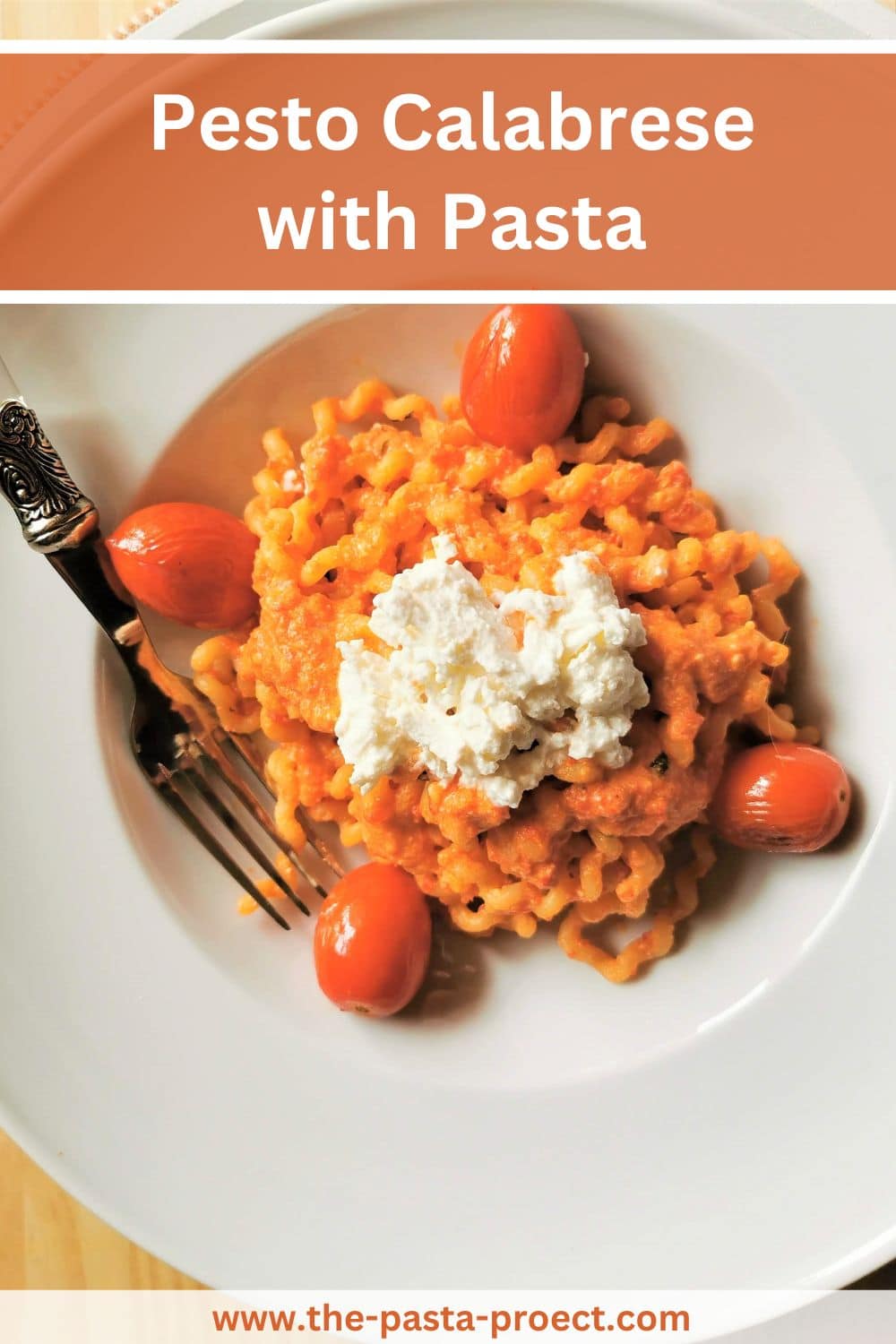
If you are interested in learning how to make homemade pasta and different types of gnocchi, check out my shop page for some great video online courses from my friends in Rome! Nothing beats learning to make pasta from Italians! Plus while you’re there why not order a copy of one of my pasta recipe cookbooks!?
Reader Interactions


